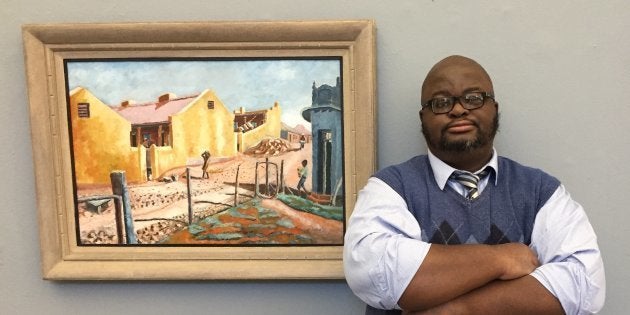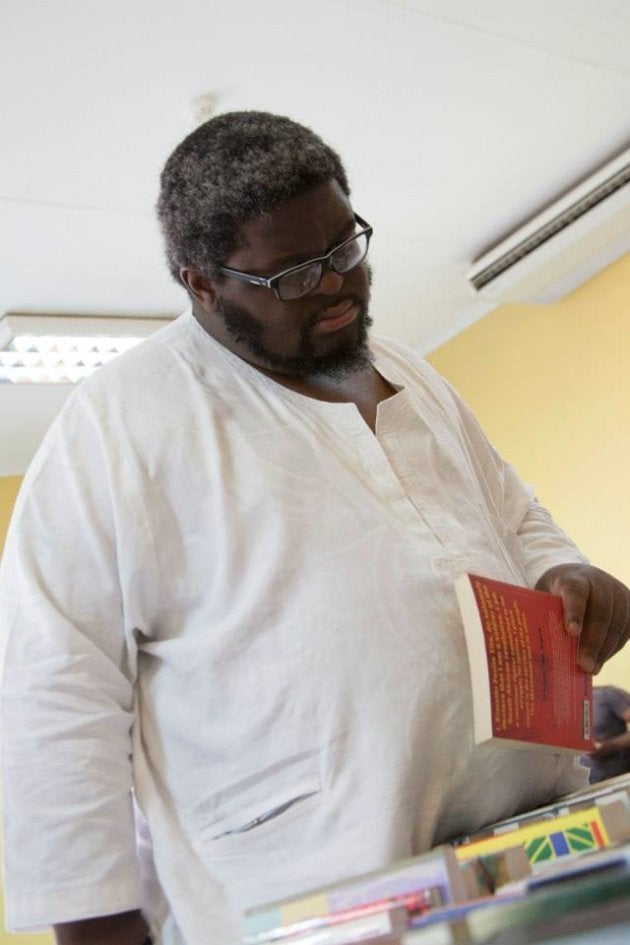
Exciting announcements at the Johannesburg Art Gallery (JAG) could herald a ray hope for the embattled institution.
HuffPost can officially confirm that the department of arts and culture has finally appointed KwaZulu-Natal-born academic and historian Khwezi Gule as the JAG's new curator-in-chief.
The announcement comes after years without an official leader at the helm of the institution, seeing the JAG suffer a severe maintenance crisis (with the gallery flooding in 2017 due to roof leaks), a previous curator who left abruptly without a vision plan, and repeated questions from the arts community about the gallery's relevance to the next generation.
Gule, who has already begun working in his new role, was previously chief curator at the Soweto Museums, (which include the Hector Pieterson Memorial and Museum and the Kliptown Open Air Museum).
Prior to that, Gule held the position of curator of contemporary collections at the JAG, so he is returning to familiar turf.
We caught up with him to discover a little more about the man holding the keys to one of South Africa's most important art institutions.

- What are your memories of the JAG growing up?
I grew up in the City of Pietermaritzburrg in KZN. My recollection of the JAG are as follows: in 1982, I visited Johannesburg for the first time when I was 10 years old. Myself, my parents and my uncle, who lived in Johannesburg then, once visited Joubert Park. In my memory of that trip the JAG does not register at all. I also remember on the same excursion going to have lunch at the top of the Carlton.
The second time I visited Johannesburg was in 1993 as a fine arts student at what used to be Wits Technikon in Doornfontein. This was a short walking distance from JAG, so I used to spend hours at the gallery, never imagining that one day I would work here.
- What is the vision for your tenure as curator-in-chief?
I have seen a number of museums in some of the biggest cities –– including Madrid, London, New York and São Paulo, among others –– and I think we need to measure up to those international standards.
However, I also think that there has to be a way of rethinking what the role of the museum ought to be in our context. Whether it is in our exhibitions, or in our collecting policies and educational programmes, our ethos has to reflect an African outlook. The JAG has to become one of the leading museums of art on the continent.
- You previously focused on contemporary collections at the JAG. How will you focus on the historical side of the gallery?
The traditional divisions between the various collections within the gallery are becoming less vivid. Collections have to speak to one another in some way. Even contemporary art exists within a particular historical context, so it is always necessary to contextualise and frame all collections and look at them with fresh eyes.
The same applies to the traditional South African art collection. We have to constantly find new ways of articulating why these objects are of value, and why we must value and preserve them. We cannot simply assume these things to be self-evident.
- Previous curators failed the maintenance of the building. How will you address this?
The issue of the building maintenance of the JAG is very high on the agenda for the current administration. So I am extremely hopeful that the maintenance challenges will be solved, and that sufficient funding allocation will be made to find a permanent solution to these issues.
- What challenges are you anticipating?
Clearly, priority number one is the collection. We have to safeguard the integrity of the collection –– and part of that is to solve the maintenance issues of the building as quickly as possible.
- Who are you watching, as the person at the helm of one of the country's most powerful acquisition budgets?
I wouldn't like to mention names, but there are many young and brilliant artists, and one always has to exercise caution –– because artists may be highly valued today and disappear from the scene the next day.
There is also a need to collect more artists from other African countries.
- What is the first exhibition you are going to put on?
At the time that I am writing these responses, I have only been in this position for three days –– so its difficult to tell.
Clearly, there are a number of artists whose exhibitions I have wanted to curate for ages –– again, I wouldn't like to spell out names right now, but at the moment based purely on my admiration of our collection it is most likely that my first exhibition would be based on our collection.
I am also interested in inviting curators who are innovative to work with our collection and our archives. I would be very interested in seeing how they engage with various objects, different histories and different discourses.
Check out the current exhibition showing at the JAG in the video below.
